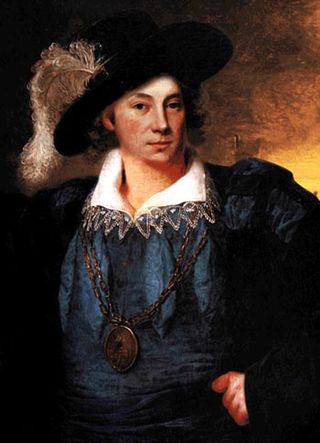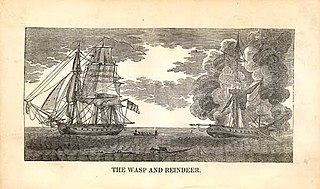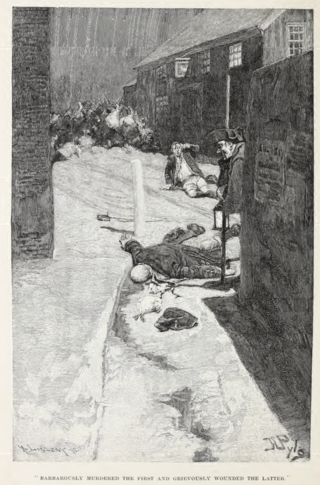
HMS Speedy was a 14-gun Speedy-class brig of the British Royal Navy. Built during the last years of the American War of Independence, she served with distinction during the French Revolutionary Wars.

Laurens Cornelis Boudewijn de Graaf was a Dutch pirate, mercenary, and naval officer in the service of the French colony of Saint-Domingue during the late 17th and early 18th century.

John Halsey was a British privateer and later a pirate who was active in the Atlantic and Indian Oceans during the early 18th century. Although much of his life and career is unknown, he is recorded in A General History of the Pyrates, which states "He was brave in his Person, courteous to all his Prisoners, lived beloved, and died regretted by his own People. His Grave was made in a garden of watermelons, and fenced in with Palisades to prevent his being rooted up by wild Hogs."
William Day was a Springfield, Massachusetts, sea captain who acted against America's enemies in both the French and Indian War and the American Revolutionary War. In 1777 he received the first gun salute to an American fighting vessel in a European port.

HMS Reindeer was a Royal Navy 18-gun Cruizer-class brig-sloop of the Royal Navy, built by Samuel & Daniel Brent at Rotherhithe and was launched in 1804. She was built of fir, which made for more rapid construction at the expense of durability. Reindeer fought in the Napoleonic Wars before succumbing in 1814 to the guns of USS Wasp during the War of 1812.

HMS Acasta was a 40-gun Royal Navy fifth-rate frigate. She saw service in the French Revolutionary and Napoleonic Wars, as well as the War of 1812. Although she never took part in any notable single-ship actions nor saw action in a major battle though she was at the Battle of San Domingo, she captured numerous prizes and rid the seas of many Spanish, French, and American privateers. She was finally broken up in 1821.
HMS Newcastle was a 50-gun fourth rate ship of the line of the Royal Navy, built by Joseph Allin the elder at Sheerness Dockyard and launched on 10 March 1704.
HMS Auguste was the French 54-gun Auguste built in Brest in 1704 that the British captured in 1705. In her brief French service she captured two British men-of-war. She was wrecked in 1716.

Van Tuyl is the surname of the Dutch family from which many North American Van Tuyls, Van Tuyles, Van Tyls and Van Tyles are descended. The family name derives from the ancient village of Tuil (Tuijl), in the central Netherlands. The family's earliest proven ancestor is the 14th-century knight Heer Ghijsbrecht van Tuyl of Gelre. This family is distinct from the Van Tuyll van Serooskerken family.

Lefebvre's Charles Town expedition was a combined French and Spanish attempt under Captain Jacques Lefebvre to capture the capital of the English Province of Carolina, Charles Town, during Queen Anne's War.
John Hoar was a pirate and privateer active in the late 1690s in the Red Sea area.
Thomas Mostyn was a British sea captain and slave trader active between New York and the Indian Ocean, and later in the Caribbean. He was one of the traders employed by New York merchant Frederick Philipse to smuggle supplies to the pirates of Madagascar.
Peter Lawrence was a Dutch pirate and privateer active off New England and Newfoundland, and in the Caribbean. His and other pirates’ dealings with Rhode Island’s governors nearly led to the colony losing its charter.
Regnier Tongrelow was a prolific privateer who operated out of New England. He captured a large number of ships over a short career, sending most back to New York, and was known for attacking the largest ships he could find.
Nathaniel “Nat” Burches was a privateer who operated out of New England. He was known for sailing alongside Regnier Tongrelow and Thomas Penniston, and for single-handedly defeating a huge Spanish ship.
Adrian Claver was a Dutch privateer based out of New England during Queen Anne's War. He sailed alongside other prominent privateers such as John Halsey, Regnier Tongrelow, and Thomas Penniston. Commanding the 18-gun ship Castel del Rey, Claver raided Spanish shipping off Havana in 1704 before accepting a commission to defend New York against the French privateer Captain Davy, though he failed to capture his target. In March 1705 with Halsey and Penniston he raided Spanish ships off Caracas. Claver was relieved of command of Castel del Rey by the ships owners in late 1705 and nothing further is known of him.

Captain Gincks was a privateer based in New York. He is best known for sailing alongside Adrian Claver, and for a violent incident involving his sailors while ashore.
Captain Crapo was a French privateer active in the Caribbean and off the American east coast during the War of Spanish Succession. He was highly successful, capturing a large number of English vessels which he sent back to his home ports in Martinique and Port Royal.
Captain Davy was a French privateer active off New England during Queen Anne’s War. He is best known for repeatedly evading capture by rival English and Dutch privateers including Adrian Claver and Thomas Penniston.
HMS Dunkirk's Prize was a 26-gun French privateer, Le Hocquart of St Malo taken by HMS Dunkirk in September 1705. She was purchased and registered on 15 November 1705. She was commissioned into the Royal Navy in 1706 for service in the West Indies. She was grounded and lost while chasing a French privateer which also went aground and was captured. She was lost in 1708.









